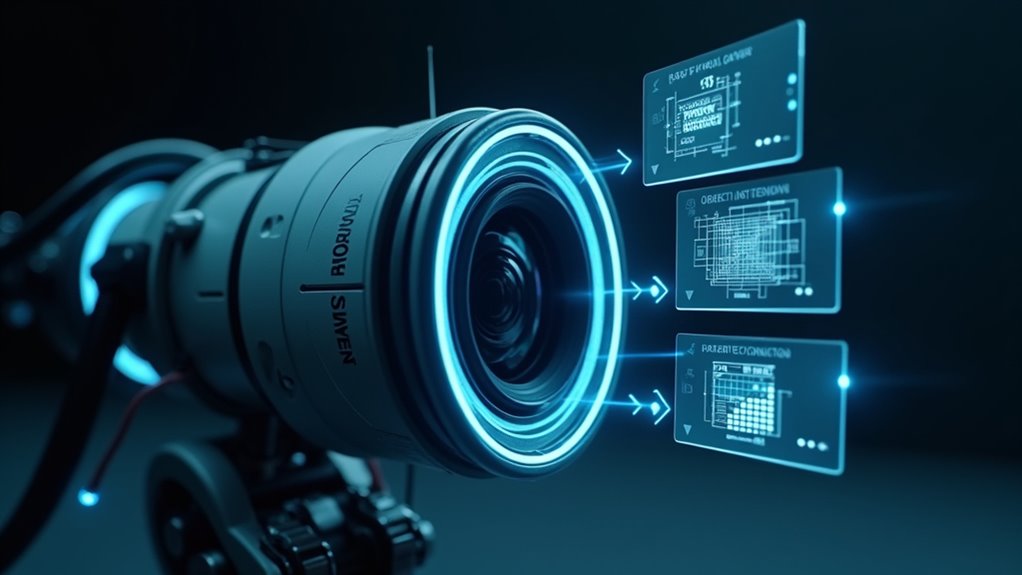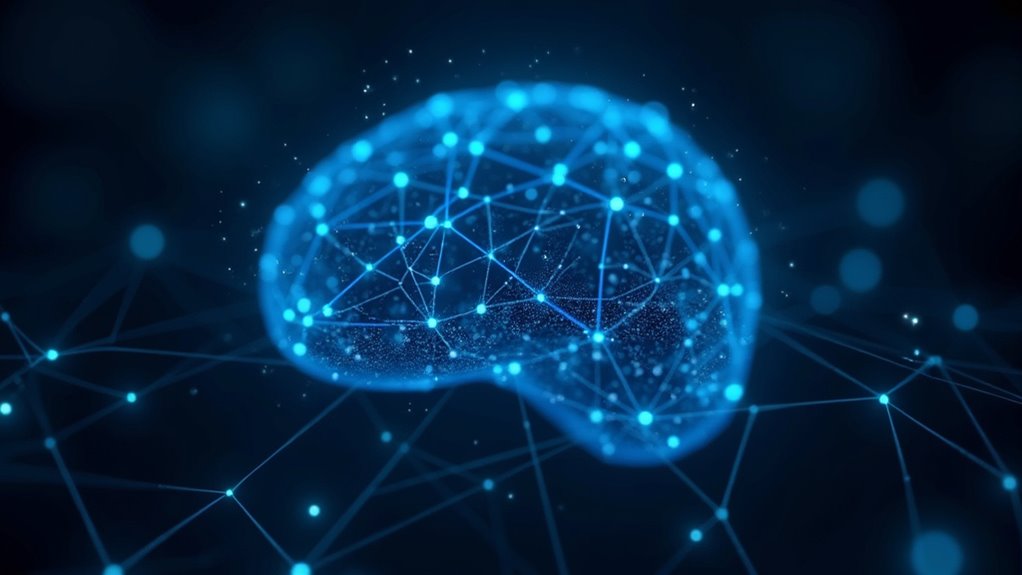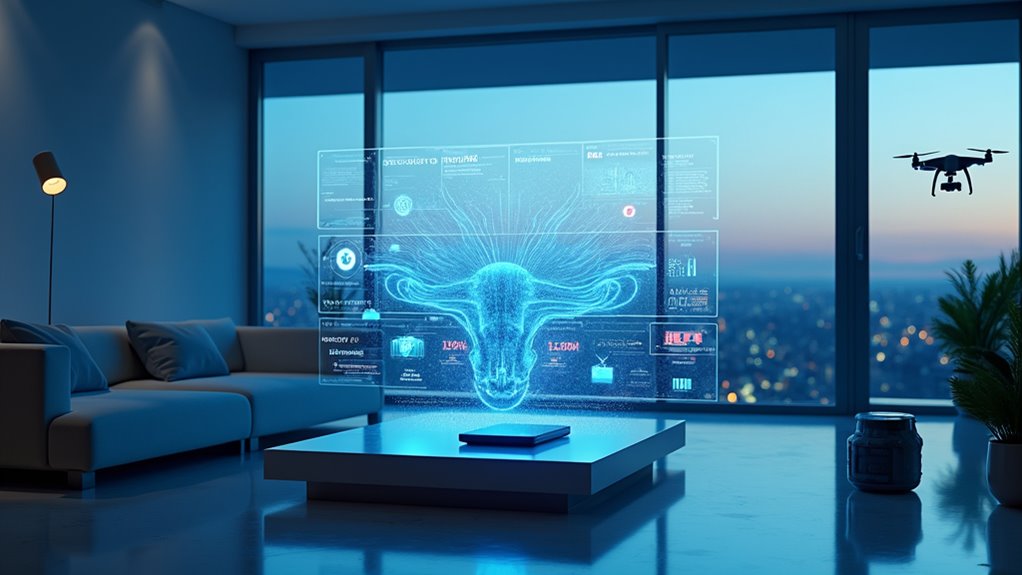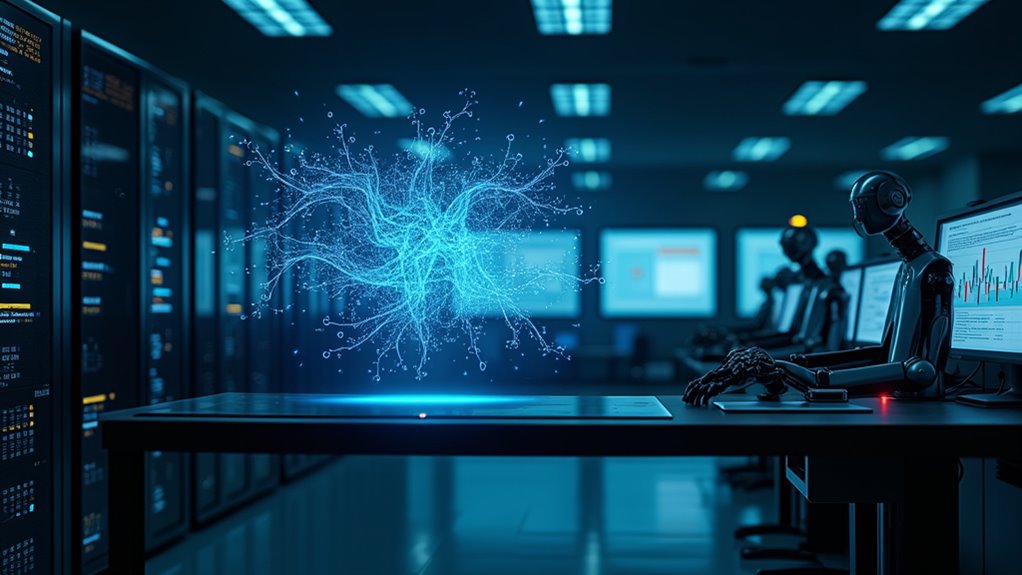Keeping AI systems safe requires a multi-layered approach that’s not for the faint of heart. Organizations must implement robust security measures, including encryption and multi-factor authentication, while maintaining strict privacy controls. Real-time monitoring, ethical frameworks, and regulatory compliance aren’t optional – they’re essential safeguards. Human oversight remains vital, because let’s face it, machines aren’t perfect. The intersection of security and ethics in AI development reveals a complex web of interconnected challenges that goes deeper than most realize.
While artificial intelligence continues to revolutionize our world, keeping these powerful systems safe isn’t exactly a walk in the park. The digital domain is a wild west of cyber threats, and AI systems need serious protection. That’s why organizations are implementing robust security measures to guarantee data confidentiality, integrity, and availability. Regular security assessments? Absolutely essential. Multi-factor authentication and encryption? Non-negotiable.
Let’s be real – AI systems are only as good as their defenses against attacks. Organizations are stepping up their game with adversarial robustness tools and continuous monitoring. They’re patching vulnerabilities faster than you can say “cybersecurity breach.” And when something goes wrong? There’s an incident response plan ready to roll. Implementing deep learning algorithms enables systems to process massive volumes of data for enhanced security monitoring.
Privacy is another beast entirely. With regulations like GDPR and CCPA breathing down everyone’s neck, organizations are turning to fancy techniques like differential privacy and homomorphic encryption. They’re anonymizing data left and right, because nobody wants their private information splashed across the internet. Access control? Tighter than a drum. The Violet teaming approach ensures diverse perspectives are included in privacy protection strategies.
Monitoring these systems isn’t just about watching screens all day. It’s about establishing real-time detection processes and implementing feedback loops that actually work. Teams of experts from different fields are working together to spot issues before they become problems. Because let’s face it – AI systems can go haywire in spectacular ways. Establishing proper accountability frameworks helps ensure responsible AI development and deployment.
The ethical side of AI isn’t just feel-good fluff – it’s fundamental. Organizations are making sure their AI systems align with human values and don’t discriminate. They’re building transparency into decision-making processes and keeping humans in the loop. Because an AI system that can’t explain its decisions is about as useful as a chocolate teapot.
Governance and compliance tie everything together. Organizations are maneuvering complex regulations while trying to stay ahead of the curve. They’re implementing safety frameworks that focus on beneficence, non-maleficence, autonomy, and justice. And they’re doing all this while constantly updating their guidelines to match evolving standards. Because in the world of AI safety, standing still means falling behind.









